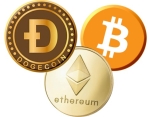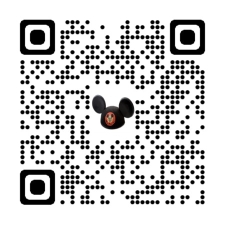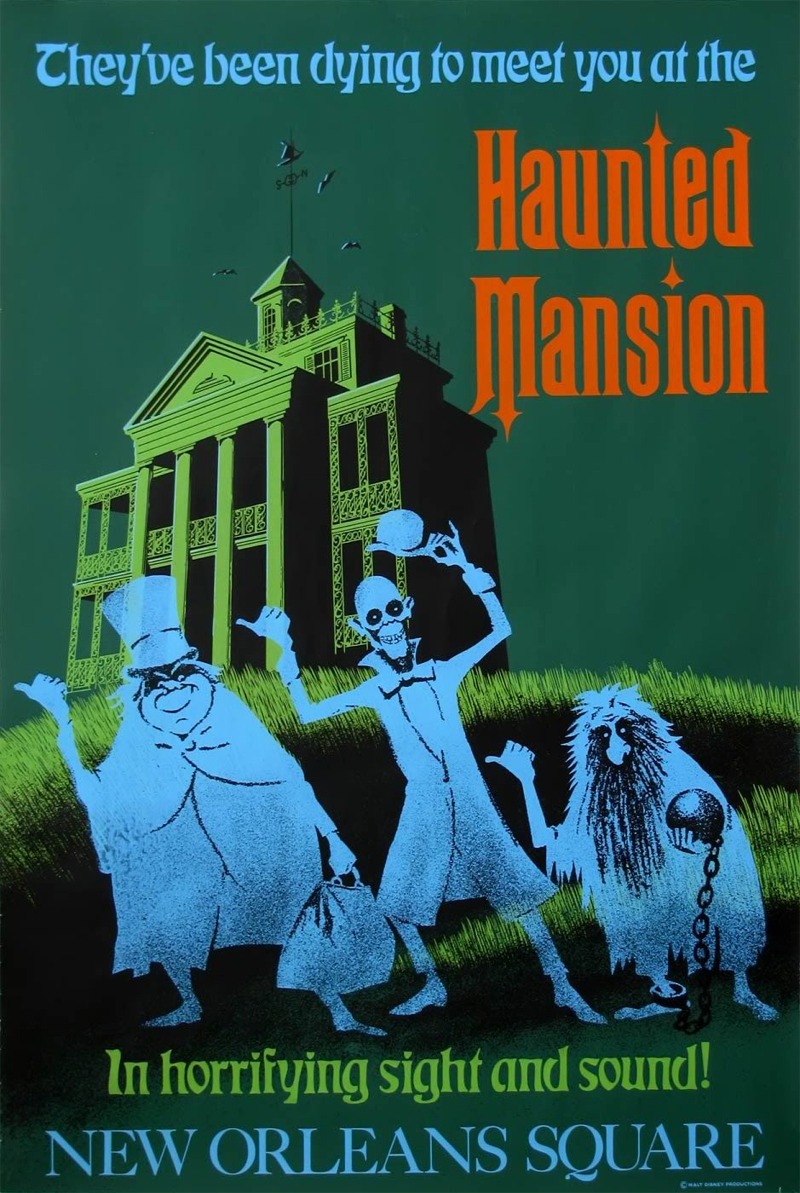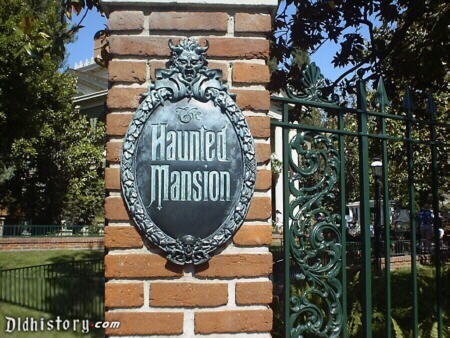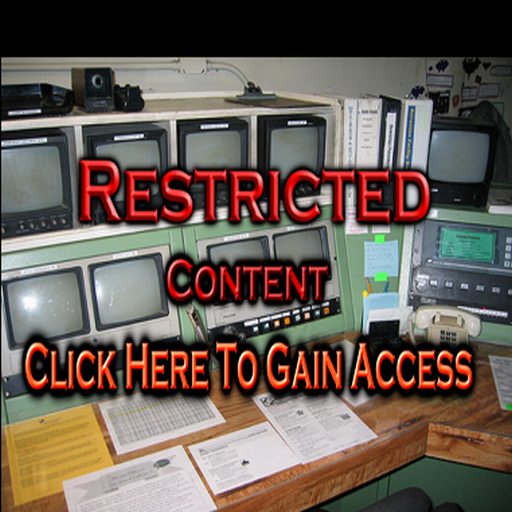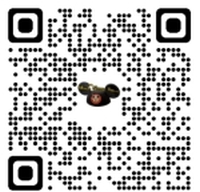The original story behind the Haunted Mansion:
The Groom owns most of Frontierland. He falls in love with the Bride, and they are engaged. Before they are married, though, she wants to return back east to visit with her family. While she is gone the Groom has a lavish, extravagant, beautiful house built on a hill at the edge of the Rivers of the Far West. The site overlooked Frontierland and could be seen from all around. The house is no sooner built than it is haunted - by the Phantom. Unfortunately for the Groom, the Phantom has fallen in love with the Bride as well. The Groom plans a magnificent wedding party for the night the bride would return. She promised him she would arrive in her wedding gown, ready to go. The magical night arrives. The Groom dresses up, the guests arrive, the cake is made, and the Phantom was there. Just before the Bride arrived the Phantom hung the groom from the tower of the house. The Bride arrived at the house and couldn't find her fiancee. After searching the entire place (but never looking up) she sits at the edge of the ballroom and cries as she watches what should have been her wedding party go on. Then, she looks behind her, and outside the Phantom is there laughing. She realizes what he has done but there is nothing she can do about it, and the Phantom condemns the Bride to live with him for the rest of their eternal lives in the house.
The actual house is right next to the edge of the park. The loading area and subsequent ride are actually "outside" the park in a big warehouse-style building. You go down so that they can get you under the railroad tracks that circumscribe the park's perimeter.
The stretch room was designed out of necessity. When the Disneyland's Mansion (just the building, not the ride) was built in 1963 it was still planned to be a walk-through attraction. For many years the building was just an empty skeleton while it waited for the Imagineers to finish up with their World's Fair business and start working on it again. They knew they could never fit the entire attraction inside the mansion you see, so they dug a very deep "basement" and then a tunnel from the basement under the berm and the railroad. When the attraction finally resumed construction in 1967 it had changed to become a ride-through. The stretch room takes you to the bottom of the basement, then you walk down the tunnel (as you pass the changing pictures and the "windows" with the storm outside. You don't get on the ride itself until you reach the exterior show building which is hidden behind the berm from guest view. If you really want to see the show building, try the Monorail (
Click Here to see the location of the show building). The stretch rooms (there are two of them) serve very nicely the purpose of getting guests down to the tunnel.
The guy hanging in the stretch room: If you look very closely when you first enter the room you will notice that all the ceiling is, is painted cloth. This allows them to light it from your side and not be able to see through the cloth. When the lights go out on your side and the lightning flashes on the other side you can see through the cloth and if you look close enough you can still see the painted designs on it.
Doom Buggy is the show name for Disney's OmniMover system. It was initially developed for the "Adventures in Inner Space" attraction by a team led by Bob Gurr. The cars, linked together, move forward via a 12-volt electric drive train. The vehicles themselves have no means of locomotion. They are driven by a series of ten motors located throughout the ride.
Each car can also be rotated 180 degrees-from facing forward to facing backward. This rotation, combined with scalloped design of the car, allows the designers to control what the guests see at any given time.
Each car is also equipped with 3 speakers. The sound (which is not stereo,) is transmitted to odd-numbered cars via a narrow band transmitter. The signal (once received) is then passed on to the even-numbered car behind it. They are changing out the old Radio Frequency receivers on the cars to new digital chips.
Disneyland's Haunted Mansion has 131 cars, with a guest capacity of 2,618 guests per hour, granting 2.25 guests per car, assuming no ride stops (wheelchairs or slow guests). A typical hour at full capacity is 2000-2400.
The Busts in the Library: These are the ones that seem to "Follow" you through the room. They are the "Inverse" of a bust. That is, instead of the bust coming out, it is really going in. Sort of like a mask. Think of it this way, if you hold a mask up to your face, part of that mask is curved to fit your face. Now, think if you had a mask that covers your whole face. Looking at the outside of it, it looks like a 3D shape. But if you look at the back side, all you see is the inside. Now, if you were to have that mask set up, so there was a light shining from the Outside "The normal part of the mask you would see someone with" And you look at it from the inside, so it is now "Back lit" you create the effect that the mask or "Bust" is now in 3D and follows you through the room.
The next effect is the Madam Leota. She is seen on a table, with different things flying in the air. These objects are simply hung with black string {aircraft cable in this case} Madam herself is only a projection. In its simplest form, you have a wig makers dummy head. You know those Styrofoam heads wigs were shown on. Well if you take a video of a girls head, then play it back on the dummy head, you get the effect of it being a real person. Why, because the shape of the girl, is the same as the shape as the dummy head. Madame Leota's face used to be projected by two film projectors; This spot is the reflection of the one of the two film projectors, and as you leave the room you can in fact see the projector, it is placed right in front of her, right under were the "Doom Buggies" track is , and also one coming from the ceiling. From using two projectors, her face had more of a 3-D effect. However, these projectors were replaced in 1989 by fiber optics, that are projected from inside the head. This has several advantages. One advantage is that the table now moves, which it could not before because it would dodge the projections. Another advantage is that there is no longer the light shining onto the crystal ball, and you do not hear the clicking of the projectors as you pass by. Yet another advantage is that her face no longer flashes or "jumps" which were properties of the film projection. Madame Leota's face was originally both the voice and face of Eleanor Audley. However, her face had to be re-filmed for the fiber optics in 1989, and she had since passed on. So they re-filmed the face using Leota Thomas, who is the voice and face of Little Leota.
The voice of The Ghost Host is the late Paul Frees. His distinctive voice can also be heard in several other Disney attractions such as "Great Moments With Mr. Lincoln" (narrator), and "Adventure thru Inner Space" (narrator).
Both "Madam Leota" and "Little Leota" use the faces of Disney imagineer Leota Thomas. Leota Thomas (her maiden name was Leota Toombs) mainly worked in the model shop and could be seen in the Small World pictorial guide, now out of print, which showed several "making of" photos. Thomas is the voice of "Little Leota" at the end of the attraction. Unfortunately, she passed away in 1993. Eleanor Audley is the voice of Madam Leota (also Maleficent and Lady Tremain).
The next effect is in the Attic. Here you see "Ghosts" Popping up, simply a dummy head on a rod, connected to a air supply. You also see the "Bride" At one time in the attic there was a "Ghost with hat-box" effect. The groom's head would slowly disappear, then reappear inside the hat box. Then the cycle would reverse. This effect was achieved much the same way as the ballroom ghosts, using reflective glass. As for how the bride is created, simply a dress with some lights under it.
The candle in the endless hallway effect. First there are 2 pieces of glass. The first one is a one way mirror. You can see through it on one side, but not on the other. The next one is a regular mirror. What happens is, that as you look into the first sheet of glass, you see the reflection on the other side, just reflected over and over again. The candle holder is placed right in front of the mirror, close enough so that you don't notice its reflection. The candle is actually sitting there, held up by a wire. The gauze helps to hide the wire that holds it up.
The big "Party" room. The one with the ghosts eating and drinking. In front of the "Doom Buggys" is a huge wall of glass. As you look out you see "Pillars" these are there to hide the edges of the glass. Now, right behind the glass is the Empty Room. Right above the "Doom Buggys" and below are the Ghosts. You are seeing there reflection in the glass. That is why the Doom Buggys have to be so high in the air, if you had been at the floor level they wouldn't be able to have the ghosts anywhere but above you. This effects is known as Peppers Ghost, a very old Theater trick. Notice that on the last or 2nd last pane of glass, there seem to be a "Spider Web" Well, that is really a bullet hole, if they were to replace the glass, they would need to take the roof off of the place, so they just "Fixed" it up a bit.
The Singing Busts, are the same as the Madam Leota, just a projection on some Dummy Heads. You can see were the tape is spliced so it repeats over and over. Don't take Flash Photos, Nothing will show up. There is a big peace of fabric running the length of the room, creating a foggy effect. If you use a Flash Photo, the fabric becomes even more "Foggy" and you cant see through it.
Names of the singing busts: Rollo Rumkin, Uncle Theodore,Cousin Algernon, Ned Num, Phineas P. Pock
The final effects you see are the Ghosts in the Mirror, and the "Little Leota" The ghosts in the Mirror somewhat like the ballroom. This time the ghosts are behind the glass, but your looking at a Half Silvered mirror. That is, you are able to see part of your reflection, and part of the Ghost on the other side. As for little Leota, she is the same as Madam Leota and the Singing Busts.
The dust that is used is purchased from a West Coast firm, by the five pound bag full. The dust is known as "Fullers Earth" and has a distinctive scent. The cobwebs are bought in a liquid form, the liquid is somewhat like rubber cement. The cobwebs are put up in the air using a fan like device.
Also, you can find the organ from 20,000 leagues under the sea.
One of the voices in the Country Bear Jamboree show (Buff the Buffalo) was Thurl Ravenscroft, the lead singing voice in the Haunted Mansion.
Capacity of the Expanding Room for descent is about 80 people or 12,000 pound. For ascent it is 2,000 pounds.
From Disneyland Report To Anaheim And Orange County 1958:
The Haunted House will be a fun walk-through which will bring visitors face-to-face with "the world's largest collection of ghosts." A piano will play with no one at the keyboard, foot-falls will be heard where only empty space appears.
In 1968 heated arguments broke out over the direction of the design of the "Haunted Mansion" the imagineers were designing for Disneyland. Everyone at WED (imagineering) had a hand in the project. Imagineer Mark Davis said, "There were too many people. . We had a lot of confusion because Walt had not been gone all that long. There were a lot of great ideas, but when you have too many people of equal clout, nobody's about to say, 'Hey, wait a minute! Let's do it this way,' which Walt would have done in a minute." Some wanted to soft-pedal the show, arguing that little kids were scared even by the witch in the "Snow White" ride. Others wanted to use every art that Disney could muster to produce a truly bone-chilling experience. Their refrain was, "People love to be scared." The soft side won. In the original drawings, done while Walt was still alive, the dilapidated, tilting mansion, its paint peeling, its windows shattered peered through ancient scraggly oaks hung with Spanish moss. The new design was as neat and pretty.
Ken Anderson one of the imagineers that helped design the Haunted Mansion went to Winchester Mystery House in San Jose to get ideas.
Design work was done from 1957-1962
In 1993, Imagineering enhanced the Haunted Mansion queue with a quirky and unconventional pet cemetery.
Both "Madam Leota" and "Little Leota" use the faces of Disney imagineer Leota Thomas. Thomas is the voice of "Little Leota" at the end of the attraction. Eleanor Audley is the voice of Madam Leota
Buddy Baker composed the original music for this attraction.
Voices:
Ghost Host - Paul Frees
Madame Leota - Eleanor Audley
Little Leota - Leota Toombs Thomas
Uncle Theodore (singing bust) - Thurl Ravenscroft
Phineas Puck (singing bust) - Bob Ebright
Rollo Runkin (singing bust) - Verne Rowe
Ned Nub (singing bust) - Jay Meyer
Cousin Al (singing bust) - Chuck Schroeder
(Some Information courtesy of "Ghost Hostess")
2010: Walt Disney Studios And Guillermo Del Toro Developing Disney's Haunted Mansion Movie
Original sets build at Grosh Studios
A lot of ideas for the Haunted Mansion seem to come from the movie The Haunting 1963
From WED Disneyland Dictionary 1968
is the site of a future attraction for Disneyland. The beautiful mansion stands on a slope overlooking the Rivers Of America. The staff at WED Enterprises is attempting to attract ghosts and other hard-to-get inhabitants for future residence in the lair of terror.
In the 1970's required a "E" ticket
In the 1980's there were live-action knights in the attraction. The idea came from Randy Bright. The first cast member to play the knight was David Mink. One cast member that played the knight in 1985 was Joe Dagostino. The knight was located between the conservatory and the corridor of doors. Other cast members that played the knight were: Kyle Clark, Graydon Van Ert.
From Steve Birnbaum brings you the best of Disneyland 1982:
On a British radio interview, Walt Disney once explained how sorry he felt for those homeless ghosts whose hauntable mansions had fallen to the wrecker's ball. He felt that they sorely needed a home and, as a solution, offered this Haunted Mansion. It's unquestionably one of the park's very best attractions. From its stately portico to the exit ramp, special effect is piled upon special effect to create a mood that is eerie, but not quite terrifying. Judicious applications of paint and expert lighting heighten the shadows that play ghoulishly on the walls outside, and maintenance crews foreswear the dusting and vacuuming that keep the other attractions looking so spiffy. The jumble of trunks and chairs and dress forms and other assorted knickknacks in the attic are always appropriately dirty. (Additional dust is purchased from a West Coast firm by the five-pound bagful, and is distributed by a device that looks something like a grass seeder. Extra cobwebs, which come in liquid form, are strung under the supervision of set- design experts who have more than once had occasion to rebuke the custodial workers for being too conscientious about their cleaning.) The eerie music and the slightly spooky tones of the Ghost Host often set very small children to whimpering as soon as their parents carry them through the door, and some members of the crews who work in the mansion at night find their nerves so taut they start at sudden noises. Nonetheless, any adult who expects to get the fright of his life may be in for a bit of a disappointment. What makes the attraction so special is the attention to, and abundance of, de- tail-so many that it's next to impossible to take them all in during the first, or even the second, time around. In the Portrait Hall (the chamber full of fearsome-looking gargoyles that adjoins the chandelier and lace curtain-adorned entrance hall), it's fun to speculate on whether the ceiling moves up or the room goes down; it's one way here and the opposite way at the mansion's Walt Disney World counterpart. Once in your Doom Buggy, look for the raven that appears again and again as you go through the house, the bats' eyes on the wallpaper, the TOMB, SWEET TOMB plaque, and the rattling suit of armor in the Corridor of Doors. Then there are the dead plants and flowers and broken glass in the Conservatory, where a hand reaches out of a half-open casket, the terrified cemetery watchman (and his mangy mutt) in the Graveyard, the ghostly teapot that pours ghostly tea, the ectoplasmic king and queen on the teeter-totter, the bicycle-riding spirits, the see-through musicians, and the headless knight and his supernatural Brunhilde. Nice stuff all. The mansion was constructed in 1963, based on studies of houses around Baltimore; the attraction inside opened in 1969 and cost $7 million. "Grim Grinning Ghosts," composed especially for the Haunted Mansion, is the name of the music. Veteran radio actor Paul Frees does the part of the Ghost Host.
March 2 2022:
Disney has set the release date for "Haunted Mansion," will now open in theaters on March 10, 2023. Justin Simien is directing the movie that also stars Owen Wilson, Rosario Dawson, Lakeith Stanfield and Danny DeVito.
September 17 2023:
"Haunted Mansion" will be made available across digital retail platforms the same day as its Disney+ release, Oct. 4

 Click Here To Gain Access
Click Here To Gain Access
 Click Here To Gain Access
Click Here To Gain Access
 Click Here To Gain Access
Click Here To Gain Access
 Click Here To Gain Access
Click Here To Gain Access
 Click Here To Gain Access
Click Here To Gain Access
 Click Here To Gain Access
Click Here To Gain Access
 Click Here To Gain Access
Click Here To Gain Access











